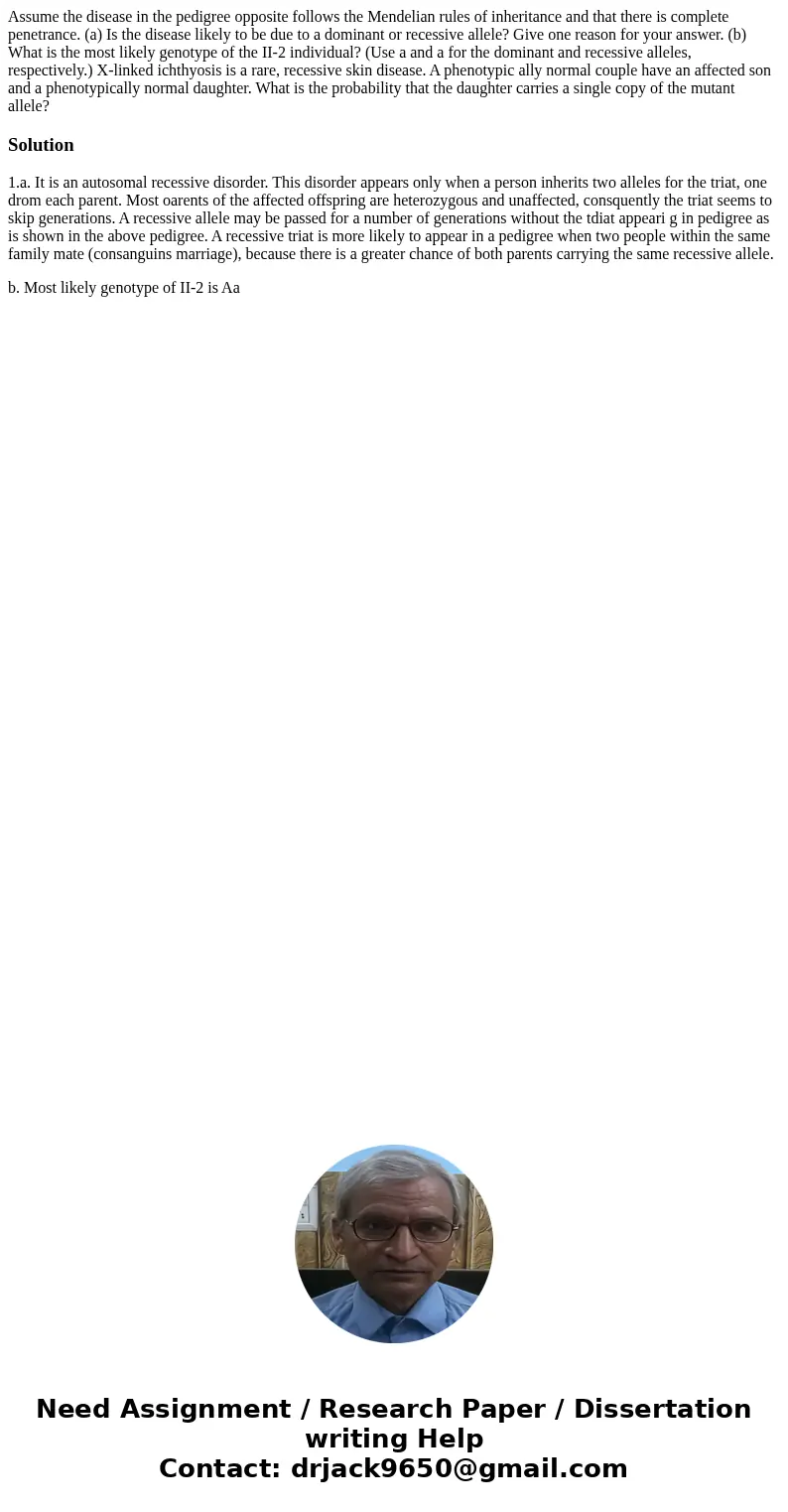Assume the disease in the pedigree opposite follows the Mend
Assume the disease in the pedigree opposite follows the Mendelian rules of inheritance and that there is complete penetrance. (a) Is the disease likely to be due to a dominant or recessive allele? Give one reason for your answer. (b) What is the most likely genotype of the II-2 individual? (Use a and a for the dominant and recessive alleles, respectively.) X-linked ichthyosis is a rare, recessive skin disease. A phenotypic ally normal couple have an affected son and a phenotypically normal daughter. What is the probability that the daughter carries a single copy of the mutant allele?
Solution
1.a. It is an autosomal recessive disorder. This disorder appears only when a person inherits two alleles for the triat, one drom each parent. Most oarents of the affected offspring are heterozygous and unaffected, consquently the triat seems to skip generations. A recessive allele may be passed for a number of generations without the tdiat appeari g in pedigree as is shown in the above pedigree. A recessive triat is more likely to appear in a pedigree when two people within the same family mate (consanguins marriage), because there is a greater chance of both parents carrying the same recessive allele.
b. Most likely genotype of II-2 is Aa

 Homework Sourse
Homework Sourse